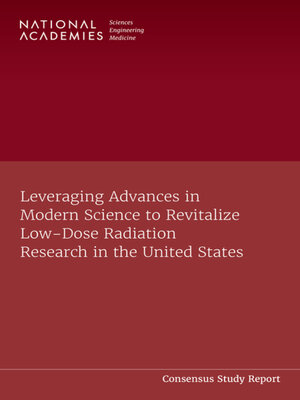Leveraging Advances in Modern Science to Revitalize Low-Dose Radiation Research in the United States
ebook
By National Academies of Sciences, Engineering, and Medicine

Sign up to save your library
With an OverDrive account, you can save your favorite libraries for at-a-glance information about availability. Find out more about OverDrive accounts.
Find this title in Libby, the library reading app by OverDrive.



Search for a digital library with this title
Title found at these libraries:
| Library Name | Distance |
|---|---|
| Loading... |
Radiation exposure at low doses (below 100 milligray) or low-dose rates (less than 5 milligray per hour) occurs in a wide range of medical, industrial, military, and commercial settings. The effects of exposure at these levels are not fully understood, but there are long-standing concerns that such exposure could negatively affect human health. Although cancer has been linked to low-dose radiation exposure for decades, there is increasing evidence that low-dose radiation exposure may also be associated with cardiovascular disease, neurological disorders, immune dysfunction, and cataracts.
Recent advances in research, new tools, and a coordinated multidisciplinary research program could help fill knowledge gaps about the health impacts of low-dose radiation exposures. This report calls for the development of a U.S. research program to study how low doses of radiation affect cancer, cardiovascular disease, neurological disorders, and other disease risks. Research should also better define the impacts of radiation doses, dose rates, types of radiation, and exposure duration. The report estimates $100 million annually for the next 15 years would be required to conduct epidemiological and biological research, and to establish an infrastructure for research.







